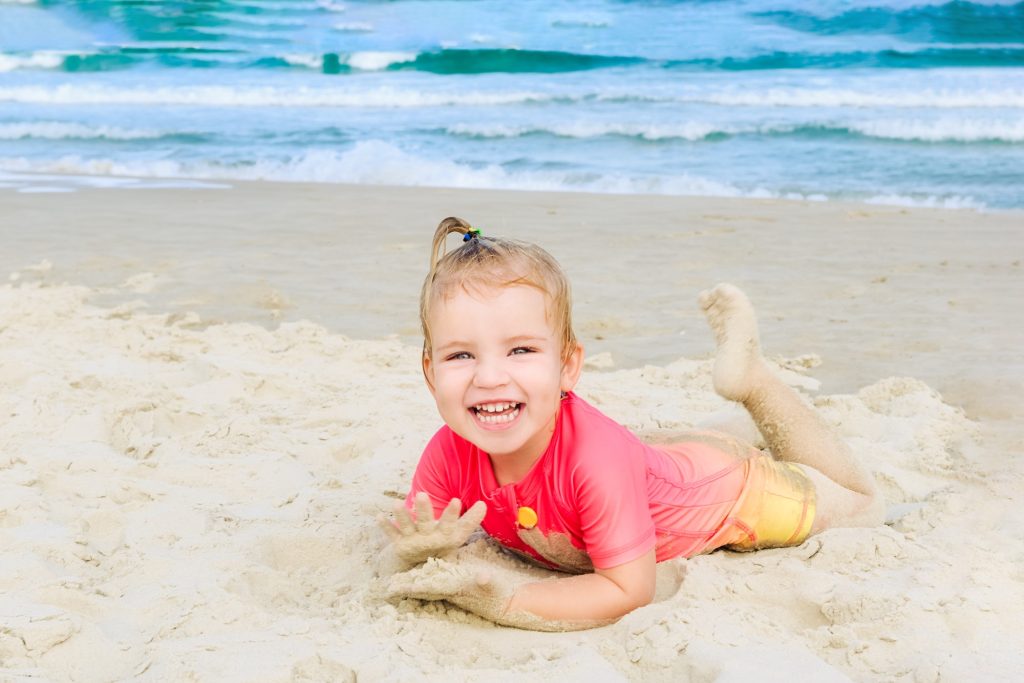Key points
- Drowning can occur quickly and quietly. It’s a top cause of death for children under five years.
- Close and constant adult supervision at all times is the key to water safety for kids.
- Water hazards include backyard pools and ponds, public swimming pools, lakes, beaches, dams, ponds, water tanks, and buckets with water.
Drowning and drowning prevention: what you need to know Drowning can occur quickly and quietly, without any warning noises.
Drowning is one of the major causes of death for children under five years. Babies and toddlers are top-heavy, which puts them at higher risk of drowning. If a baby falls into shallow water, they can’t always lift themselves out.
In Australia, children under five drown in:
- swimming pools
- baths and spa baths
- rivers, creeks and streams
- beaches
- dams, lagoons and lakes.
Children also drown in less obvious locations, like nappy buckets, water tanks, water features and fish ponds – even pets’ water bowls.
For every toddler who dies from drowning in Australia, approximately seven other children are hospitalised from drowning incidents. Some of these incidents result in severe brain damage.
Water safety for kids: the basics
It’s important to always stay with your child and watch closely whenever they’re near water – even when your child can swim.

Supervision means constant visual contact with your child and keeping your child within arm’s reach at all times. You should be in a position to respond quickly, whether you’re at the beach or the swimming pool, near dams, rivers and lakes, or at home near the bath or spa. Hold your child’s hand when you’re near waves or paddling in rivers.
Supervision is not an occasional glance while you nap, read or do household chores. It’s not watching your children playing outside while you’re inside. It’s always best for an adult, not an older child, to supervise.
You should also teach your child about water safety and how to swim from a young age. Many children can learn to swim by the time they’re four or five.
First aid is an essential skill for the entire family to learn. If you know how to do CPR and what to do in an emergency, it could save your child’s life.
Water safety around the house
The majority of drowning deaths in Australia result from a child falling or wandering into water, particularly into a backyard pool. But a young child can drown in just a few centimetres of water.
Here are some tips to prevent drowning and improve water safety around your house:
- Remove any containers with water in them from around the house and make sure your child can’t get to any bodies of water, including the bath, on their own.
- Use a nappy bucket with a tight-fitting lid and keep the bucket closed, off the floor and out of your child’s reach.
- Always empty the baby bath as soon as you’re finished with it so older siblings can’t climb in. • Empty sinks, tubs, buckets, baths, basins, troughs and paddling pools immediately after use. • Secure covers to ponds and birdbaths and cover other water features with wire mesh, or keep them empty until your child is at least five years old.
- Keep aquariums and fishbowls out of reach of small children.
Water safety around dams, creeks, ponds and tanks
Children don’t always understand, apply or remember rules, especially when they’re distracted by play. So, a securely fenced, safe play area can be an effective barrier between small children and water hazards.
Here are tips to improve water safety around your property:
- Fence off the area between the house and any bodies of water.
- Teach your child to not go near the dam, creek or water tank without you. • Secure a toddler-proof lid over any water tanks.
- Fence off, drain or seal ponds if your children or visiting children are less than five years old. • Make sure there are no trellises, ladders, windows or trees that your child could climb to get into the water tank.
Water safety around beaches, lakes and rivers
Here are tips to improve water safety near the ocean, lakes or rivers:
- Always stay with your child when they’re playing in or near the sea, lakes or rivers. Hold your child’s hand near waves and when paddling in rivers.
- Take your child only to patrolled beaches where surf lifesavers are present, and swim only between the red and yellow flags.
- Teach your school-age child what to do if they need help – stay calm, float and raise an arm to signal to a lifeguard or lifesaver.
Beverly Hills Montessori Christian Long Day Care combines the delivery of authentic Montessori education with Christian values. Our centre has been around for over 30 years and our passionate team of carefully selected educators is at the core of our success. Come meet us and see why our centre is the best choice for your child’s future – book a tour now.

